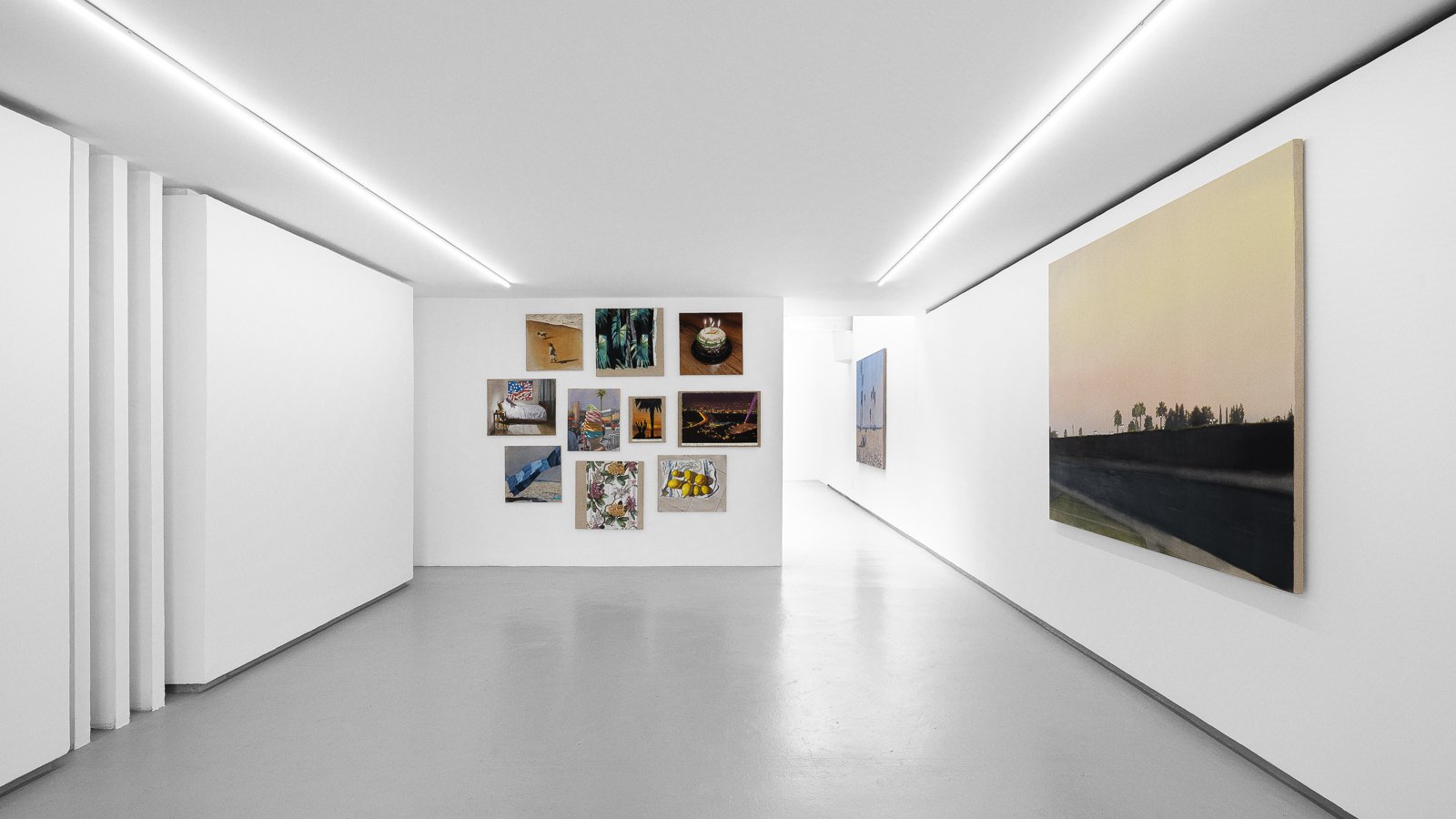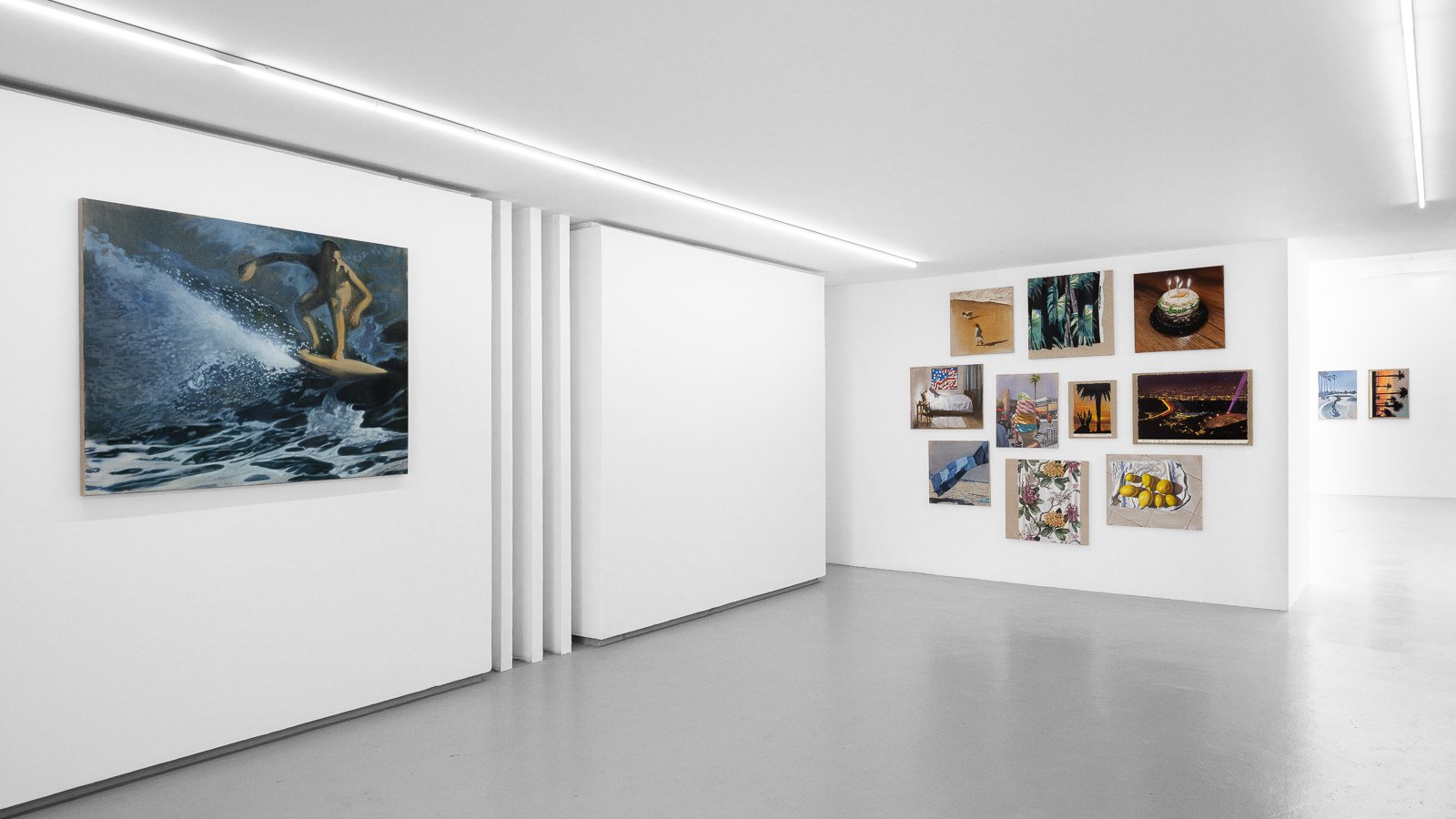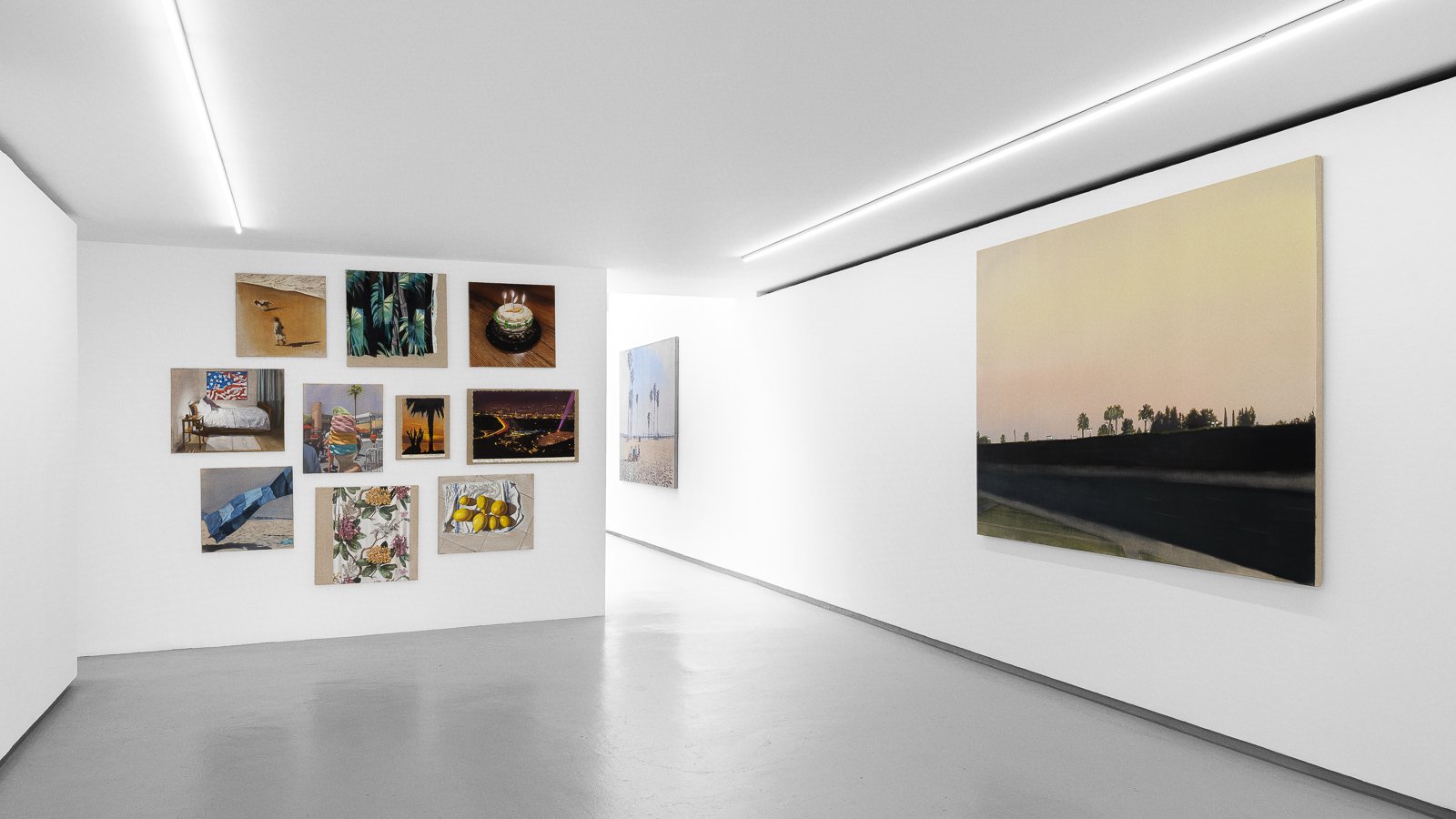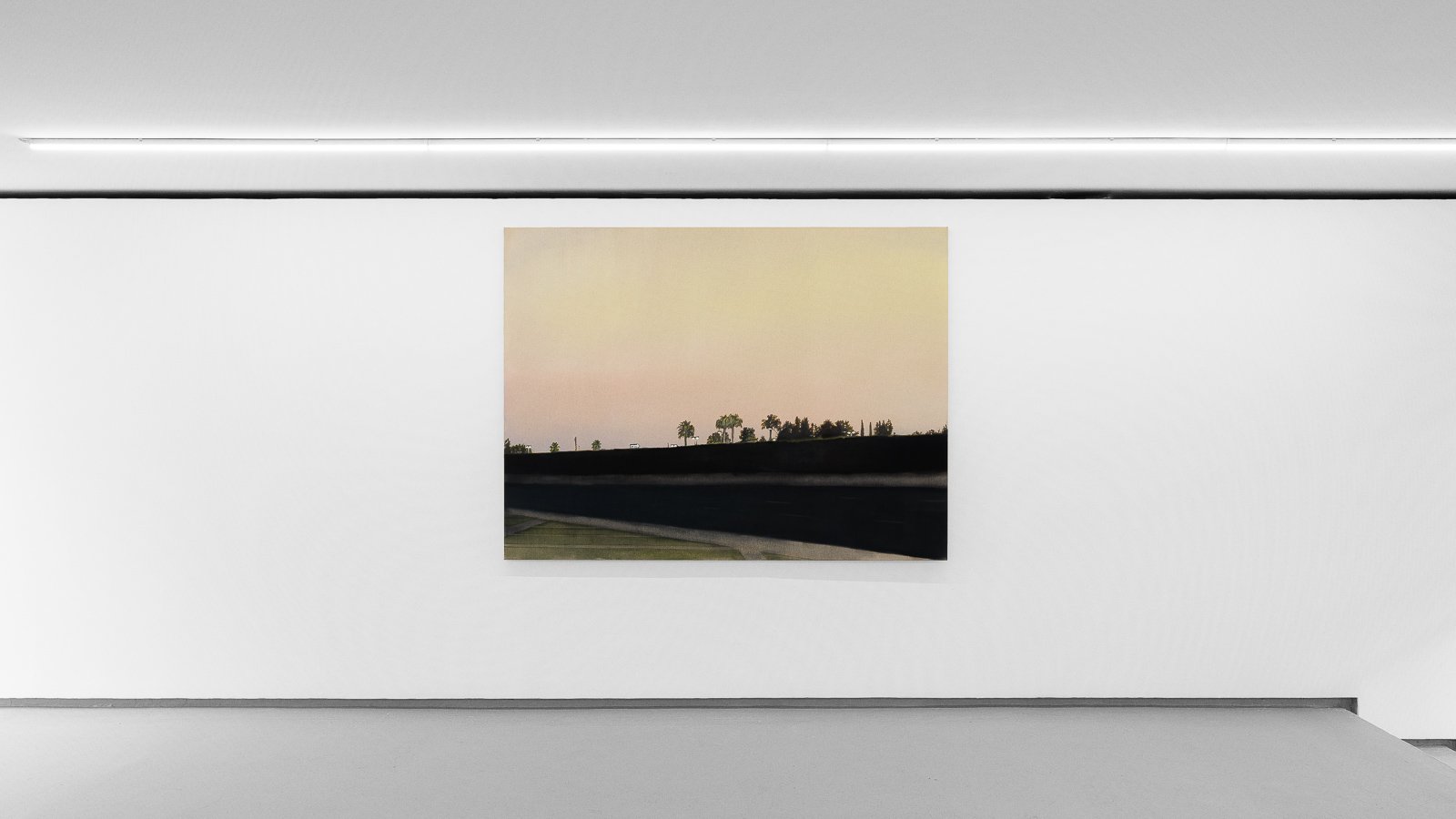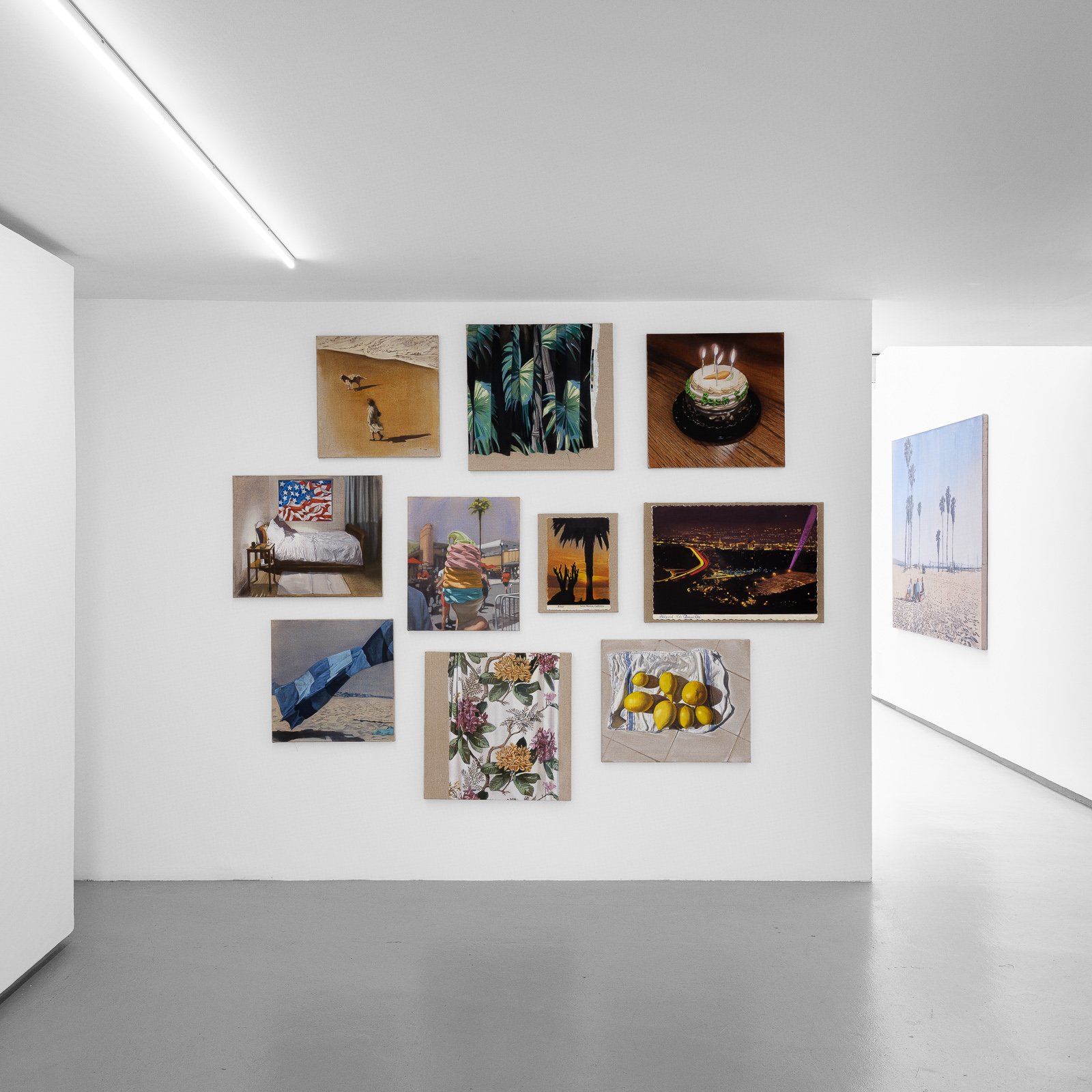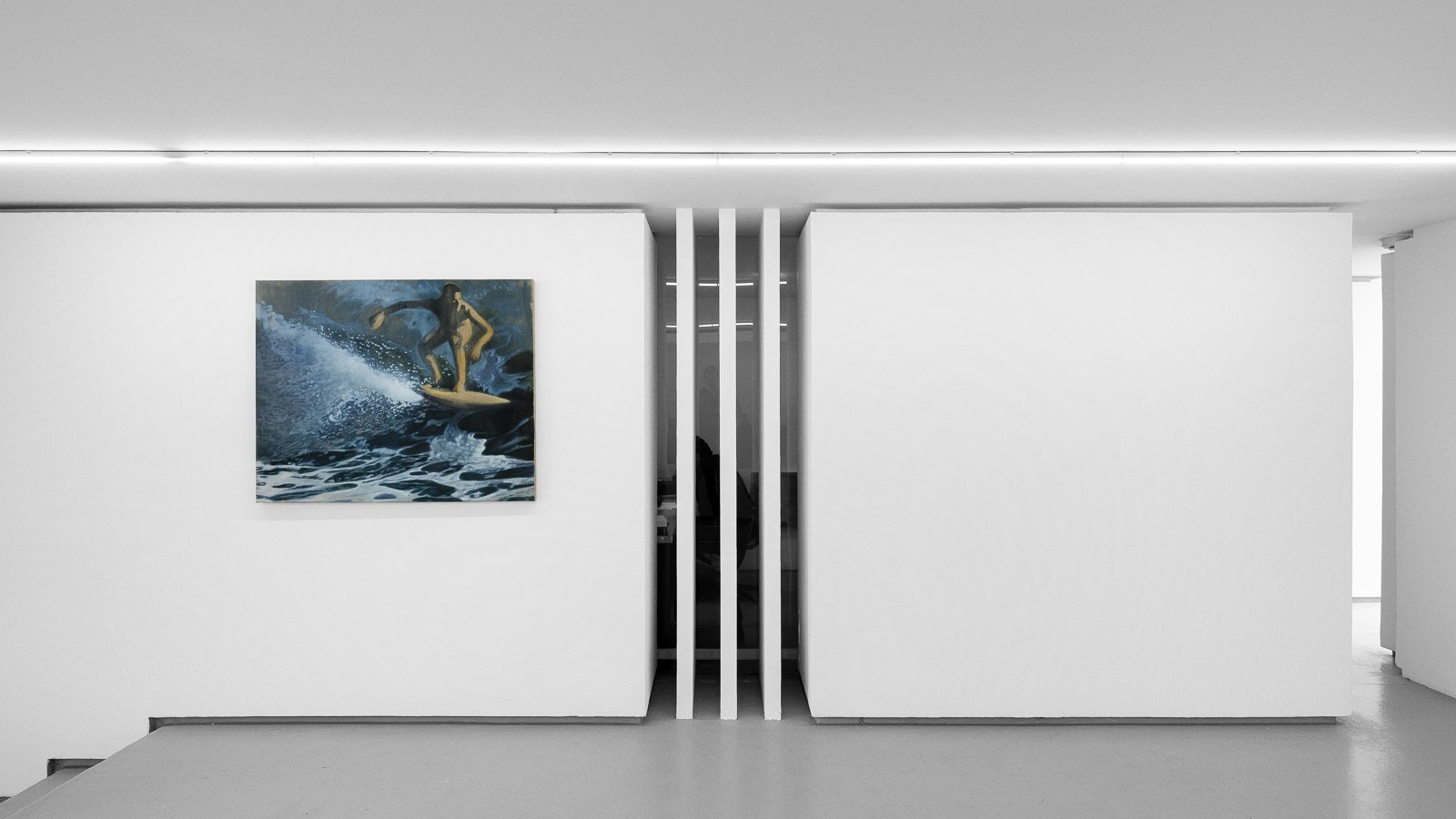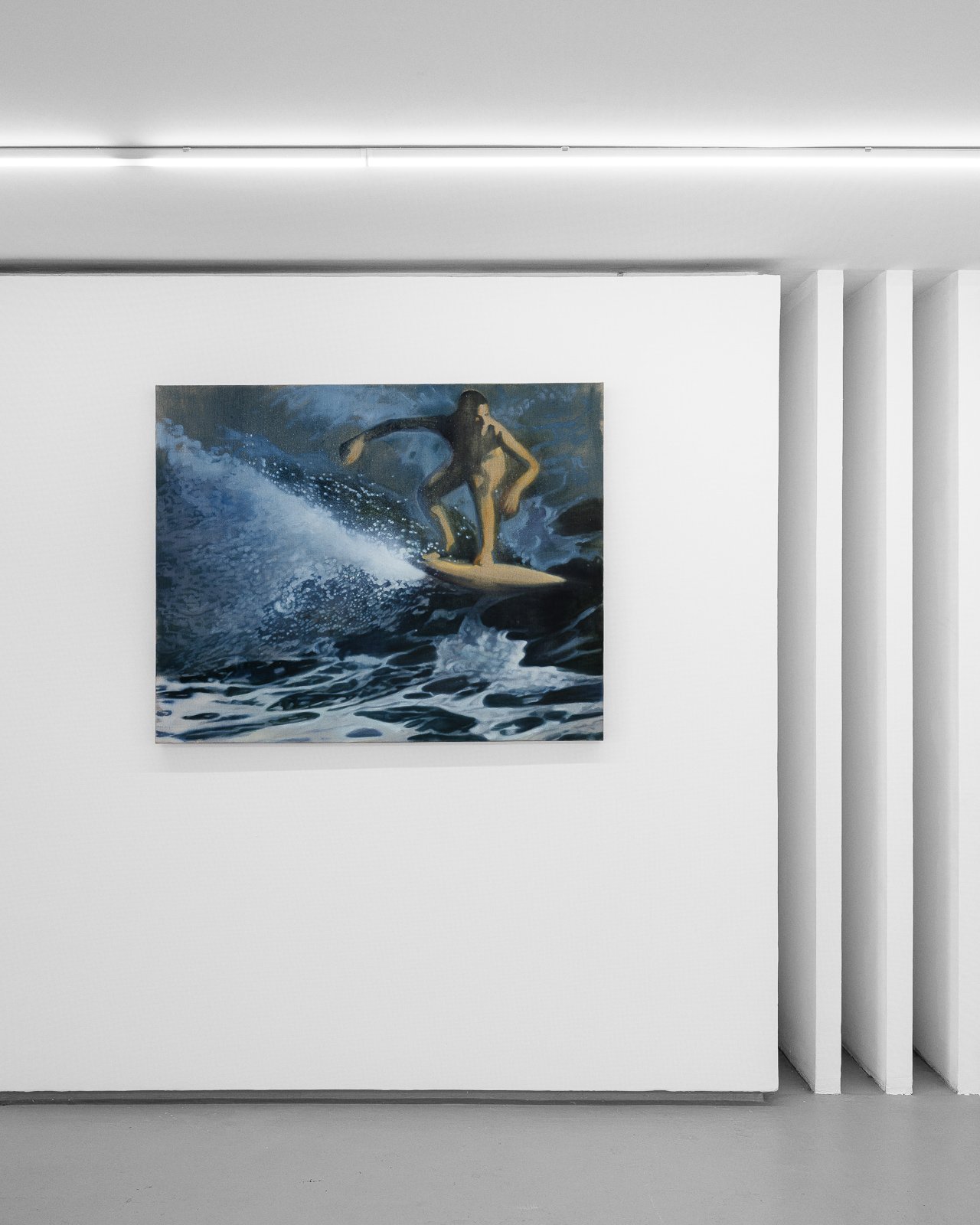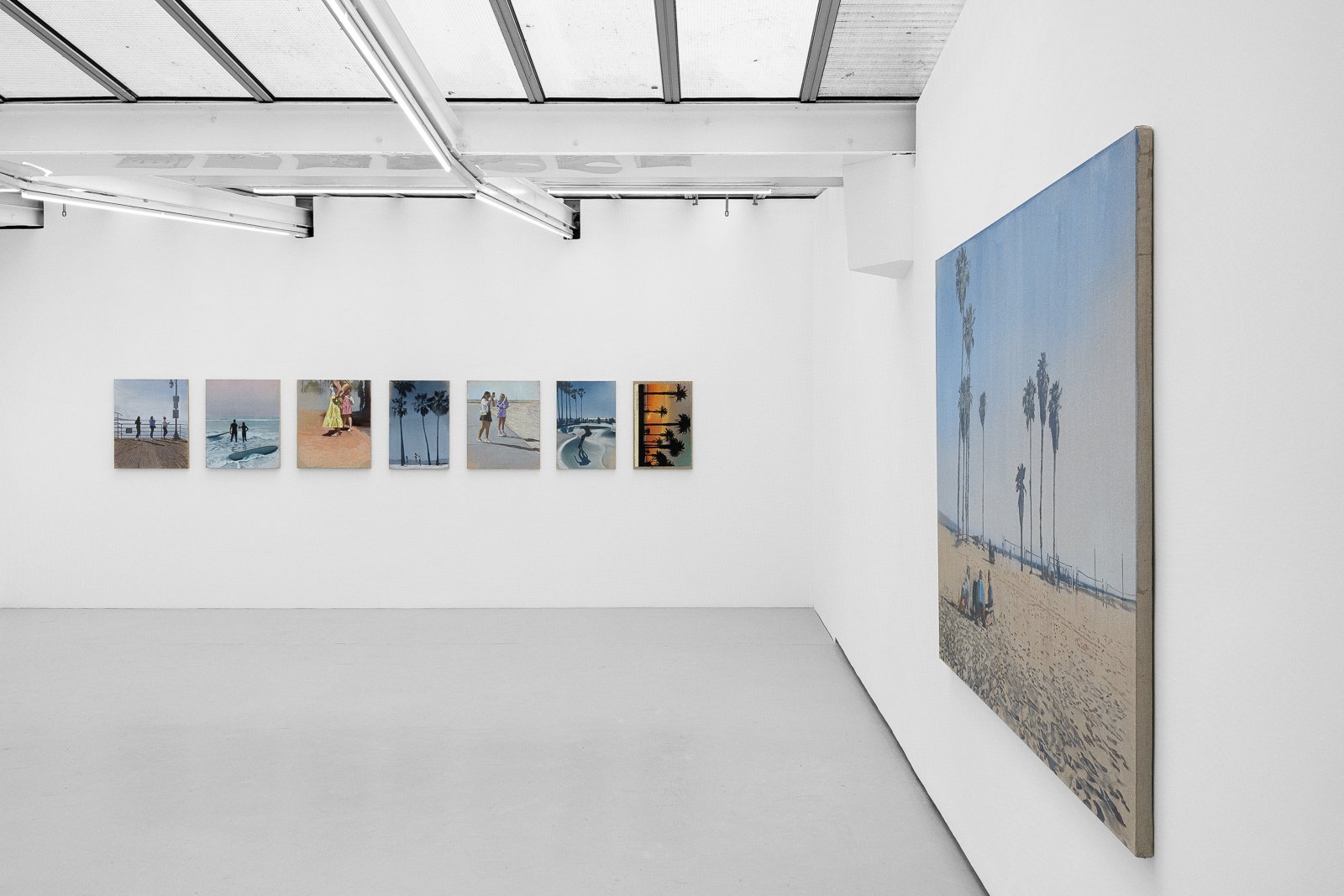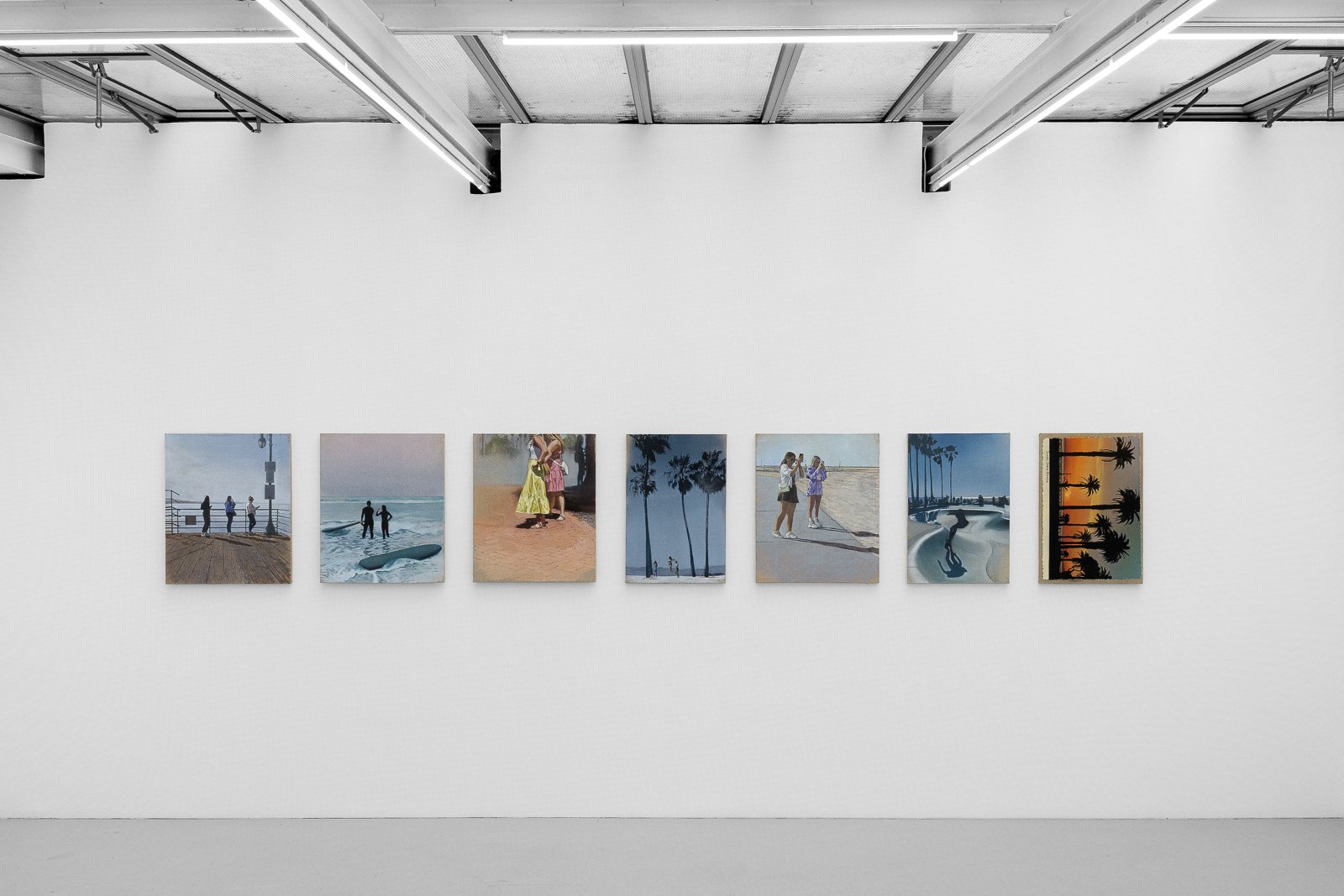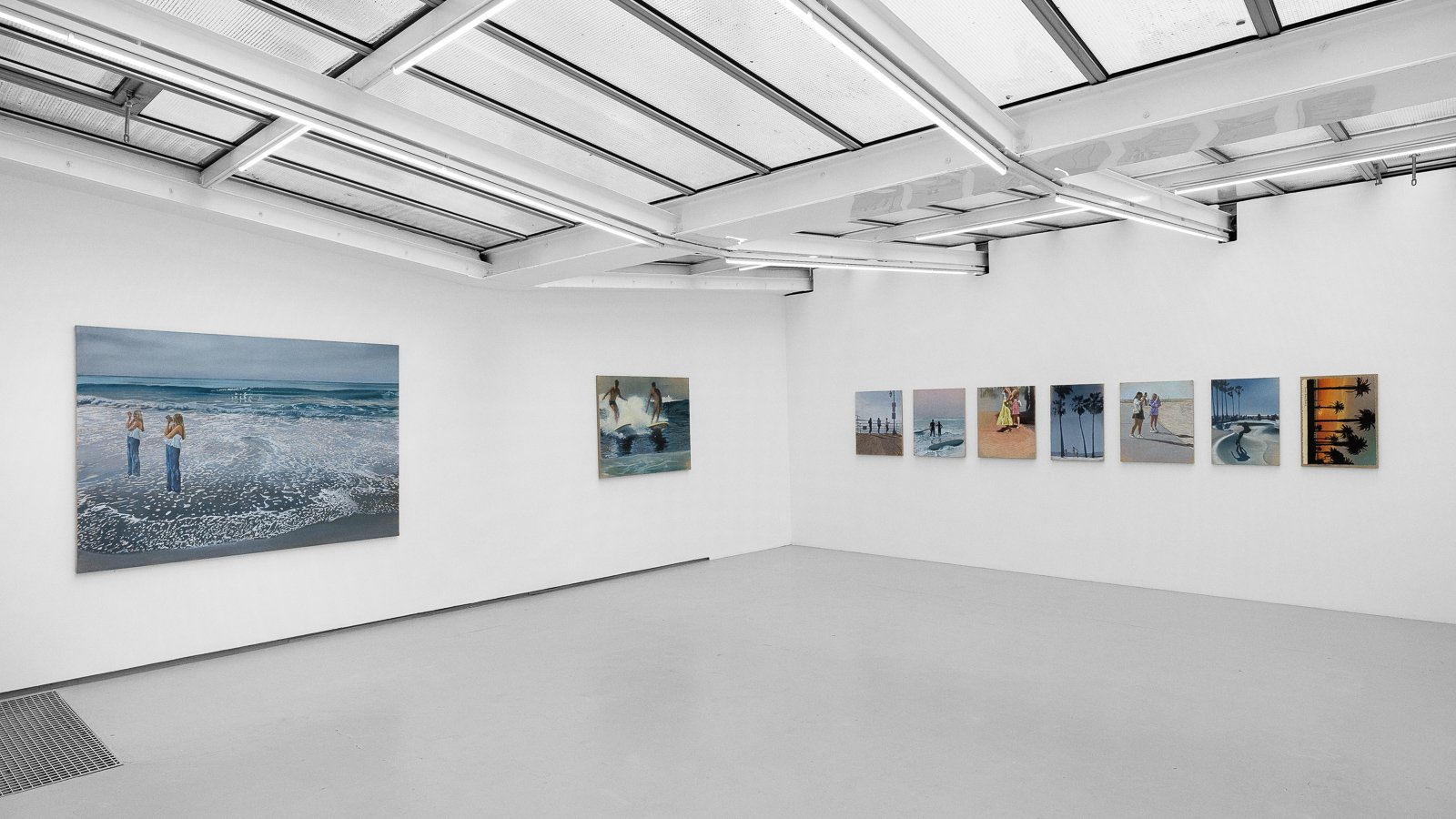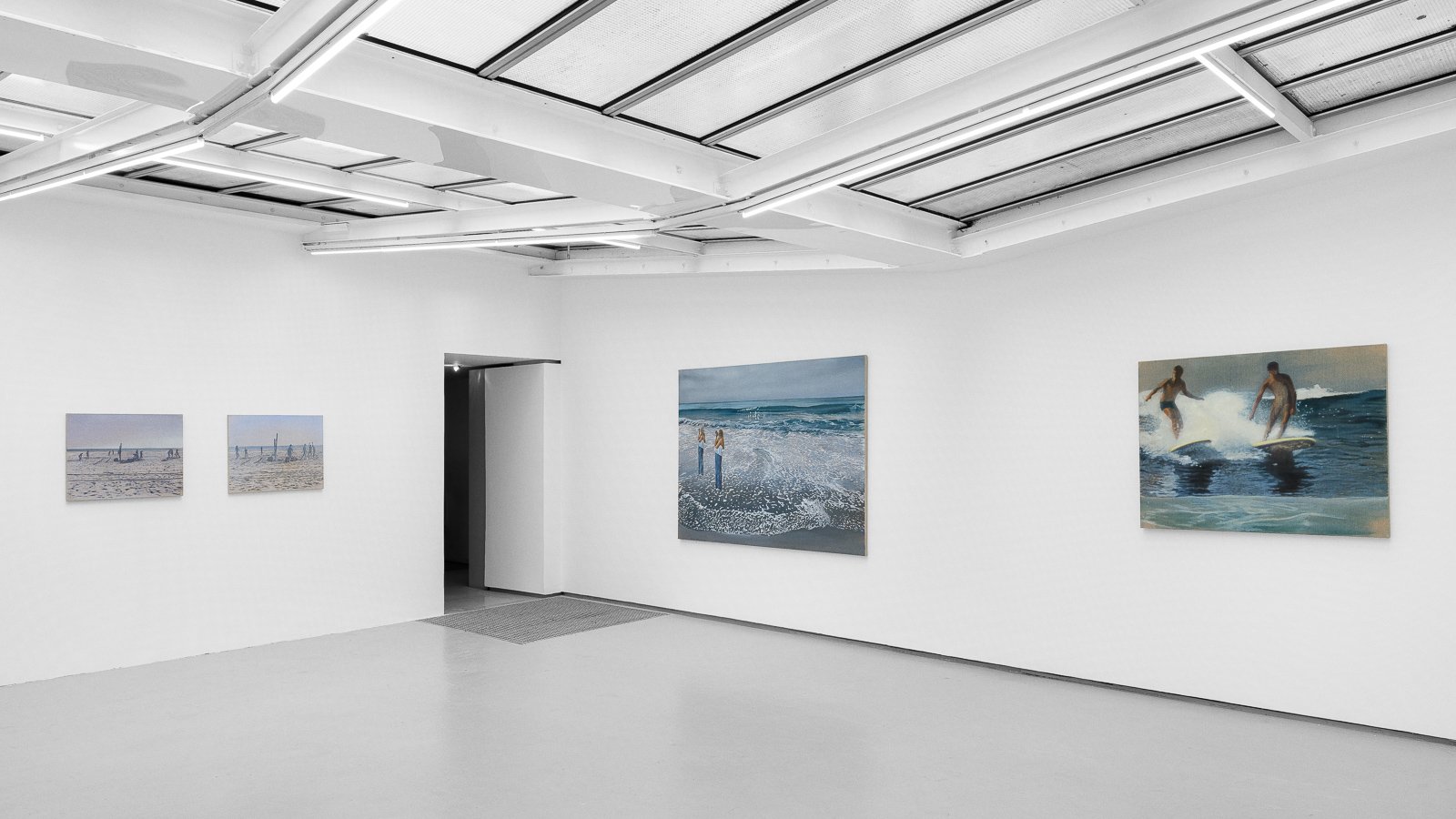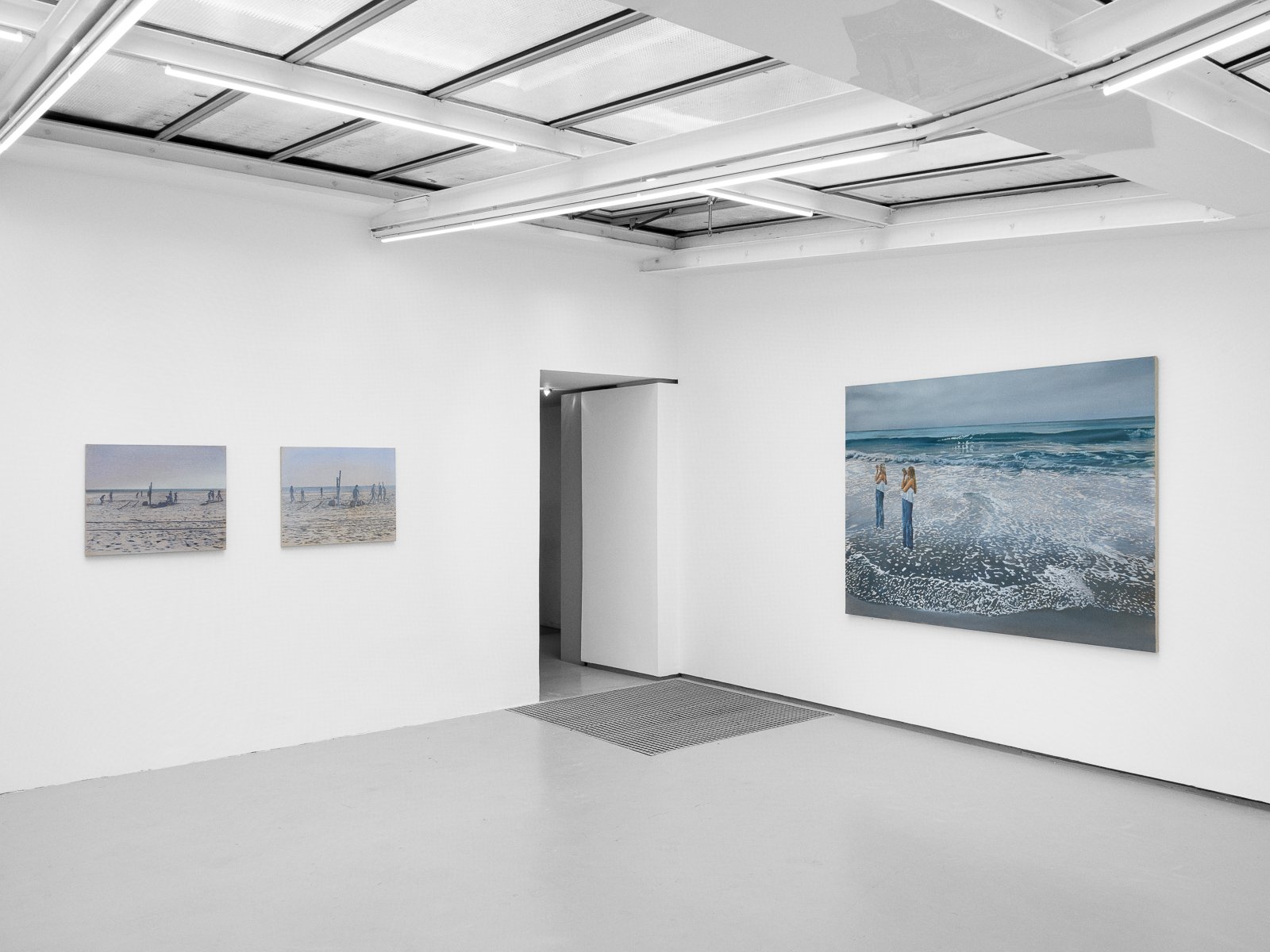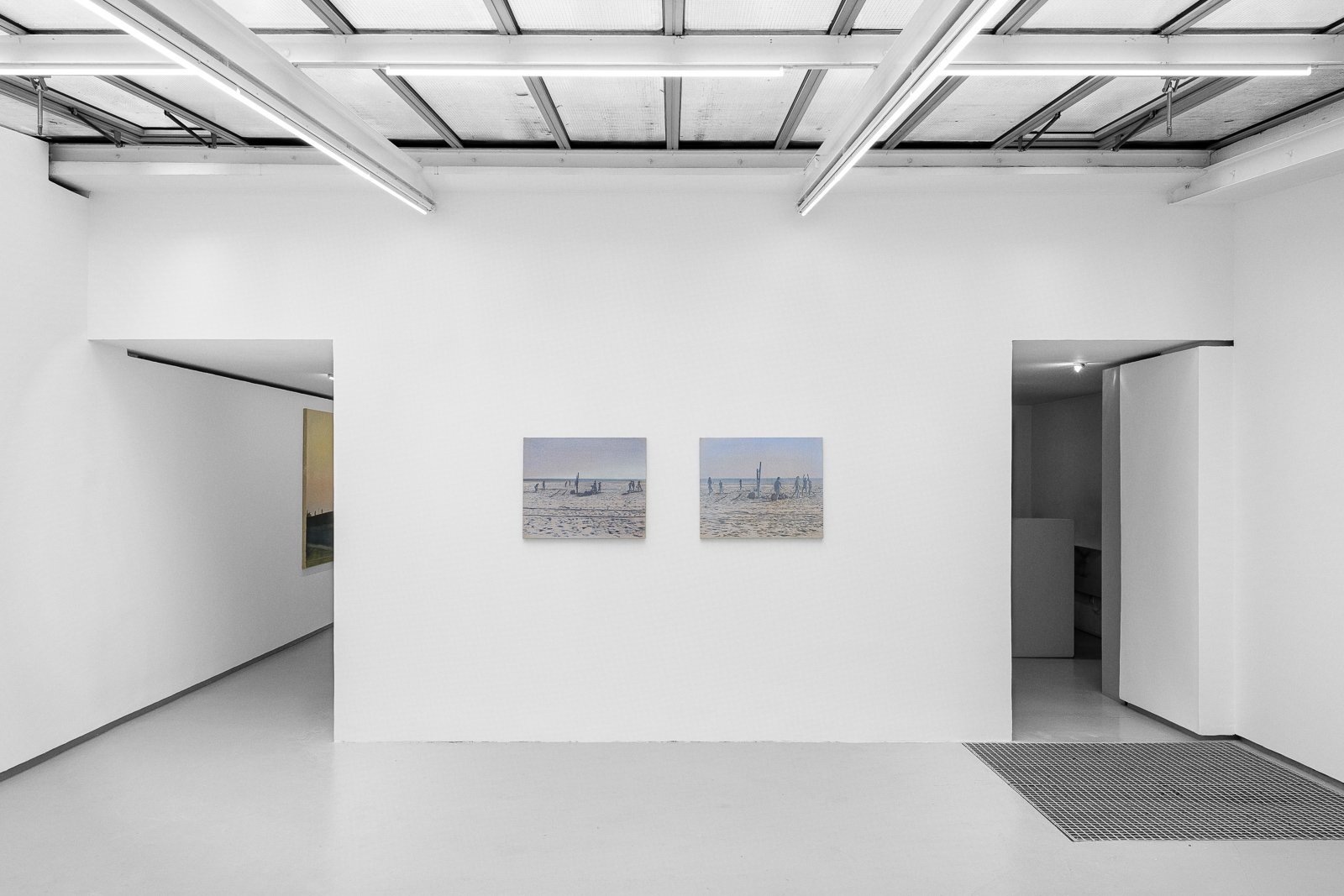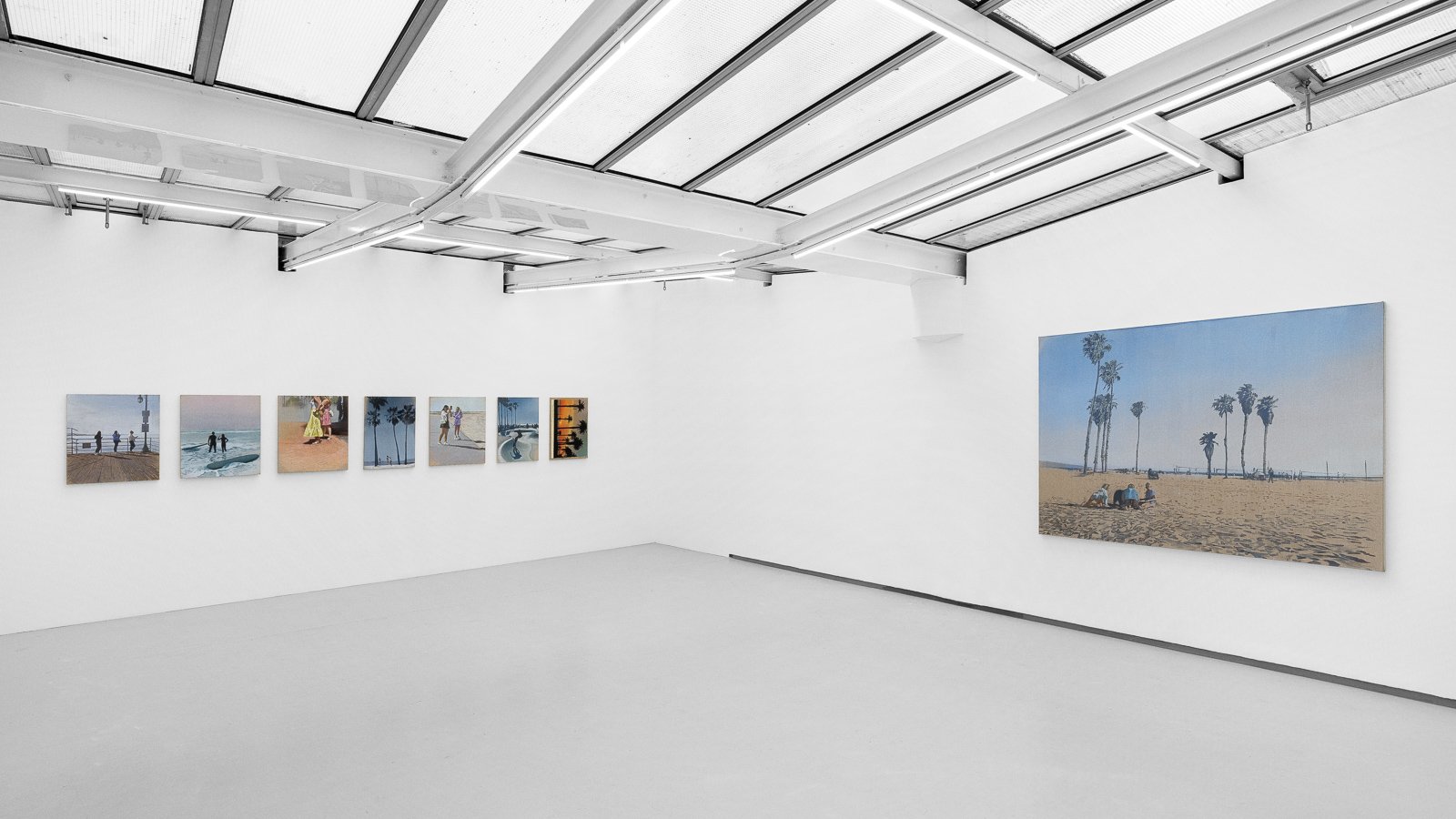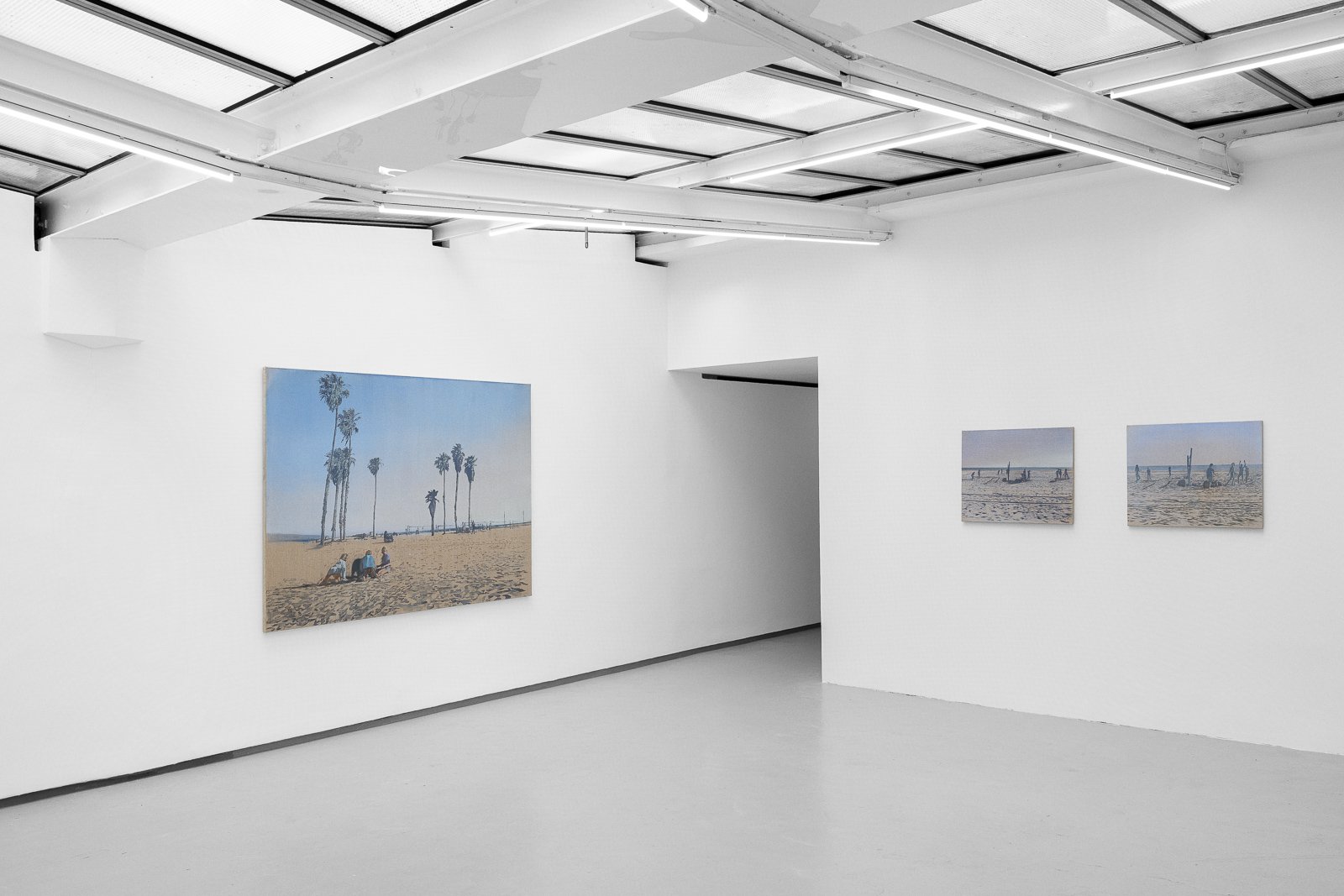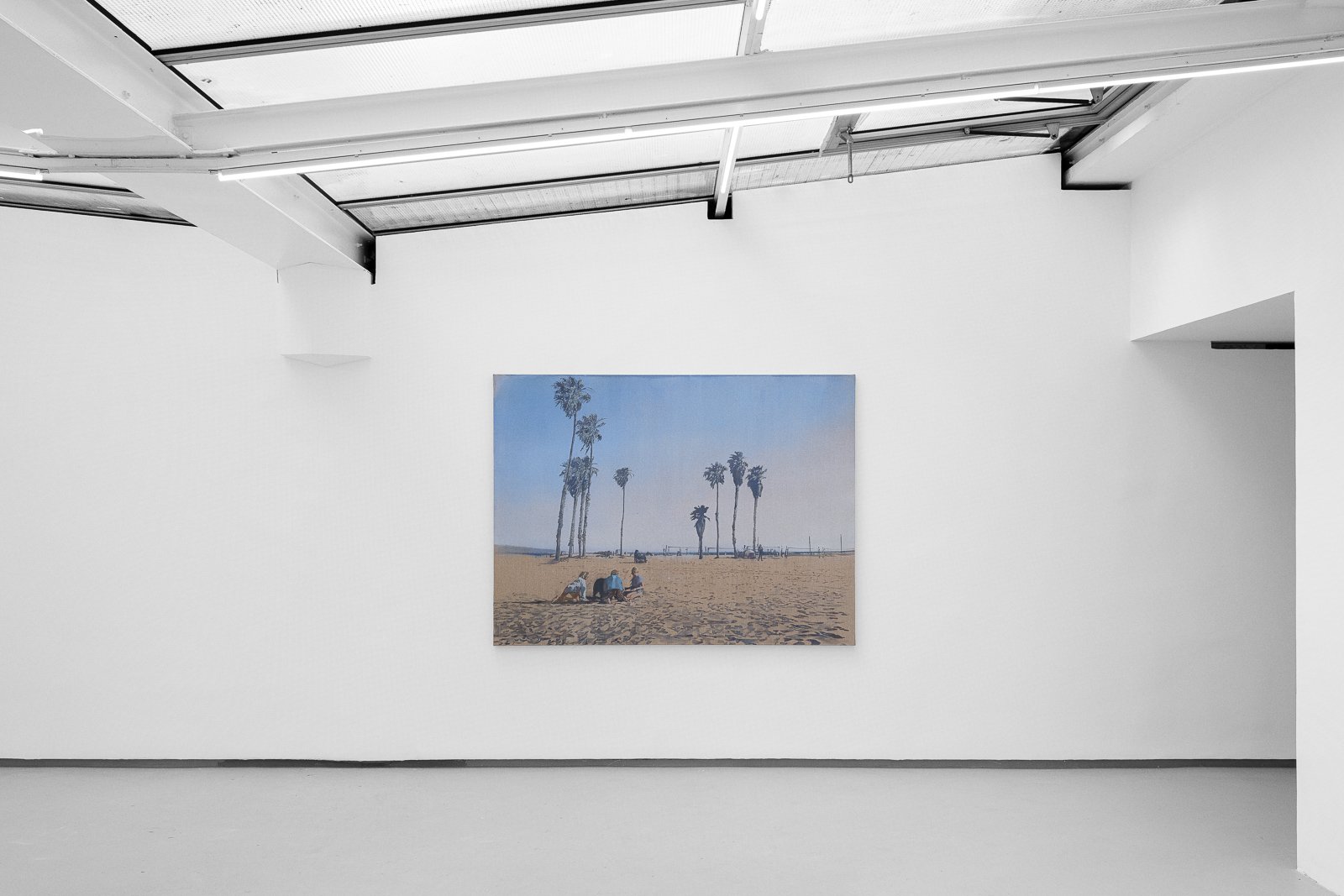What if?
une exposition de Olivia Bloch Lainé
du 9 septembre au 22 octobre 2023
Vernissage le 9 septembre de 14h à 21h.
Why, who me, why?
Feet don't fail me now
Take me to your finish line
Oh my heart it breaks every step that I take
But I'm hoping that the gates, they'll tell me that you're mine
Walking through the city streets
Lana del Rey - Born to Die (2012)
Dans son atelier à Paris, je dis à Olivia Bloch Lainé que la bande-son de sa peinture pourrait être une chanson de Lana Del Rey. Dans le vertige de la ville, il y a un air de vacances. Une douce mélancolie, voire une nostalgie. What if? Des scènes de plage en famille, des jeunes filles qui font des selfies sur un ponton, des surfeurs et l’océan - toujours présent. Il y a là quelque chose d'amer et de sucré. Les peintures nous immergent dans un rêve californien, une iconographie inscrite dans l’imaginaire collectif lorsque l’on pense à la côte ouest, à Los Angeles en particulier. Une lumière blanche, forte, quasi homogène. Des ombres marquées. Des palmiers. Tous les ingrédients sont présents. Depuis plusieurs années, l’artiste peint des fragments d’un imaginaire situé qui la hante, la traverse et la fascine sans, au départ, en comprendre véritablement les origines et les enjeux. Un sentiment mélancolique imprègne les peintures. What if? Un sentiment accentué par le choix du support : la toile de lin brute. La couleur légèrement cartonnée oriente notre lecture des images en lui conférant une dimension mémorielle et fragile. Les images semblent estompées, comme extraites d’un rêve, d’un souvenir lointain. Attachée à des cartes postales qu’elle glane dans les brocantes, à des images extraites de magazines, de publicité et d’autres supports publiés, l’artiste s’approprie une iconographie. Elle est à la recherche d’une histoire, qui, sans vraiment le savoir, est en partie la sienne. Olivia Bloch Lainé est née sous X. Elle a été adoptée et le sait depuis longtemps. What if? Elle vit avec une absence qui trouve une place centrale au sein de sa peinture : des flous, des visages absents, des corps anonymes, des espaces manquants, des repentirs ou encore des réserves.
Olivia Bloch Lainé décide de mener une recherche pour tenter d’obtenir des informations, des indices à propos de ses parents biologiques. Les recherches la mènent en 2020 vers la Californie, à Los Angeles, où vit sa génitrice. La coïncidence avec l’obsession californienne est plus que troublante. Elle rencontre une partie de son histoire, découvre, entre autres, que sa grand-mère biologique était peintre. Helena Leigh-Hunt (1931-1995) peignait des tissus, des drapés, des motifs imprimés sur textile - un ensemble de représentations qu’Olivia Bloch Lainé travaille à son tour au sein des nouvelles œuvres. Ainsi, une toile de petit format se démarque. Elle présente une chambre sobrement meublée : un lit aux draps blancs défaits, surmonté d’une peinture encadrée peinte par Helena Leigh-Hunt. L’œuvre à l’intérieur de l’œuvre représente le drapeau américain gorgé de plis qui le déforment. Cette chambre, photographiée puis peinte par Olivia Bloch Lainé, est celle de son demi-frère. What if? La chambre dans laquelle elle aurait pu elle-même grandir. Elle devient un espace de généalogies désincarnées, d’abimes, de projections, de désillusions et de vertiges.
À Los Angeles, l’artiste rencontre une famille qui existe et évolue dans un monde parallèle, une histoire qu’elle s’est inventée et qui, si elle a pu trouver un ancrage réel, relève pourtant d’une forme de flottement. Une histoire, suspendue dans le temps et dans l’espace, qu’elle s’efforce de figurer sur la toile pour se (re)trouver. Ainsi, les peintures s’inscrivent dans un espace entre-deux : entre le réel et la fiction, entre la mémoire et le souvenir fabriqué, entre l’Europe et les États-Unis, entre l’exaltation et la douleur, entre deux vies : l’une vécue et l’autre projetée. Un territoire d’hypothèses, de possibilités et d’impossibilités - What if? - au sein duquel, Olivia Bloch Lainé formule des fantasmes, des questions, des liens et des ruptures. Cet espace qu’il n’est pas utile de définir est nourri de complexités, de nuances, de désirs, de doutes, qu’Olivia Bloch Lainé ne cesse de cultiver en mêlant le réel aux souvenirs (dés)incarnés.
Julie Crenn
Why, who me, why?
Feet don't fail me now
Take me to your finish line
Oh my heart it breaks every step that I take
But I'm hoping that the gates, they'll tell me that you're mine
Walking through the city streets
Lana del Rey - Born to Die (2012)
At her Paris studio, I told Olivia Bloch Lainé that the soundtrack to her paintings could well be a Lana Del Rey song. Within the dizzying city, there’s a vacation feeling. A gentle melancholy verging on nostalgia. What if? Family beach scenes, girls snapping selfies on a pontoon, surfers, and the ocean—always present. There’s something bitter and something sweet there. The paintings immerse us in a Californian dream, an iconography inscribed in the collective imaginary of the West Coast, especially of Los Angeles. Harsh, white, almost uniform light. Sharp shadows. Palm trees. All the ingredients are present here. For several years now, the artist has been painting fragments of a regionally specific imaginary that has haunted, infused her, and still fascinates her, even though she did not fully comprehend its origin and stakes at first. A melancholy mood pervades the paintings. What if? A mood underscored by the choice of medium: raw linen. The slightly sepia hue tinges our reading of the images by conferring upon them a memorial, fragile aspect. The images appear faded, as if extracted from a dream or a distant recollection. The artist, attached to postcards that she found at flea markets, to images drawn from magazines, ads, and other print media, repurposes an iconography. She is in search of a past that, without her realizing it, is partly her own. Olivia Bloch Lainé was born under X. She was adopted and has long known it. What if? She lives with a lack that is at the heart of her painting: blurs, absent faces, anonymous bodies, missing places, remorse, even reserve.
Olivia Bloch Lainé decided to look for information, for records of her biological parents. This search brought her to California in 2020, to Los Angeles where her birth mother lived. For someone so obsessed with California, the coincidence is more than striking. She met a part of her past and discovered, among other things, that her biological grandmother was a painter. Helena Leigh-Hunt (1931–1995) painted cloths, drapery, patterns printed on textile: a range of representations that Olivia Bloch Lainé has reworked in turn through her new art pieces. Accordingly, a small canvas stands out. It shows a spartan bedroom: a bed with unmade sheets and, above it, a framed Helena Leigh-Hunt painting. The work within the work depicts the American flag heavy with folds that deform it. This bedroom, photographed and then painted by Olivia Bloch Lainé, is her half-brother’s. What if? The bedroom she herself could well have grown up in. It has become a space of disembodied genealogy, gulfs, projections, disillusionment, and dizziness.
In Los Angeles, the artist met a family that had existed in a parallel world, a past that she has dreamed up and that, even though she has managed to give it a real-life anchor, is still at heart a form of uncertainty. A past, caught in time and space, that she has striven to reproduce on canvas the better to find herself anew. As such, the paintings lie in a liminal space: between fiction and reality, between false memories and true recollections, between Europe and the United States, between pain and ecstasy, between two lives: the one lived and the other envisioned. A landscape of hypotheses, possibilities, and impossibilities—What if?—within which Olivia Bloch Lainé articulates fantasies, questions, relationships, and separations. This space, which need not be defined, thrives on complexity, nuance, desire, and doubt, all of which Olivia Bloch Lainé cultivates as she mixes reality with (dis)embodied memory.
Julie Crenn
translated by Jeffrey Zuckerman
